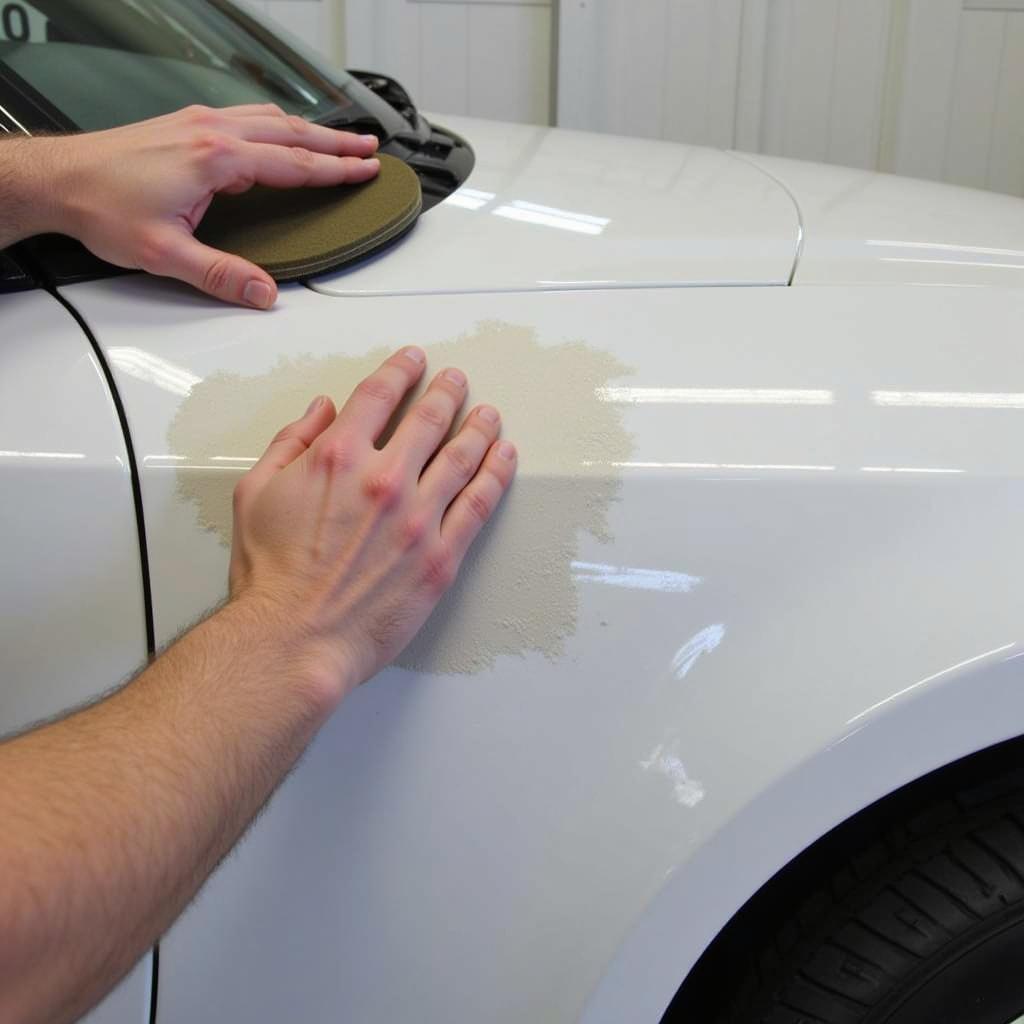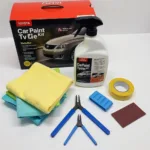Car paint repair sandpaper is a crucial tool for achieving a professional finish when fixing scratches, chips, or other imperfections on your vehicle’s paintwork. Choosing the right grit and technique is essential for a flawless result. This guide will delve into the nuances of using car paint repair sandpaper, offering expert advice and practical tips to help you achieve a showroom-worthy finish.
Understanding Car Paint Repair Sandpaper Grits
Selecting the appropriate grit is paramount for successful car paint repair. Using the wrong grit can lead to further damage, requiring more extensive repairs. A lower grit number indicates a coarser sandpaper, ideal for removing more material quickly, while a higher grit number signifies a finer sandpaper, used for smoothing and polishing. Knowing which grit to use for each stage of the repair process is key. For example, you might start with a repair scratched car paint project by using a coarser grit like 180 to level out the scratch, then progress through increasingly finer grits like 320, 500, and even 2000 to achieve a smooth, polished surface.
Choosing the Right Sandpaper for the Job
Different types of sandpaper are designed for specific applications in car paint repair. Wet sanding, for example, uses sandpaper designed to be lubricated with water, preventing clogging and providing a finer finish. Dry sanding is generally used for initial leveling or shaping, but requires more caution to avoid excessive friction and damage. Understanding the differences between wet and dry sanding is essential for achieving optimal results. For less serious damage, like a car paint minor scratch repair, you might only need finer grits and wet sanding.
Techniques for Effective Car Paint Repair with Sandpaper
Proper sanding technique is just as important as choosing the correct grit. Applying even pressure and using long, smooth strokes will prevent uneven surfaces and swirl marks. Sanding in one direction, rather than circular motions, will minimize the risk of creating noticeable scratches. Remember, patience is key; rushing the process can lead to mistakes and necessitate additional repair work. If you’re unsure about how to approach a specific issue like repair loose car paint, it’s always best to consult with a professional.
Avoiding Common Sanding Mistakes
One common mistake is applying too much pressure, which can create deep scratches or even remove too much paint, exposing the primer or bare metal. Another common error is using the wrong type of sandpaper. Using dry sandpaper for wet sanding, or vice versa, can compromise the effectiveness of the repair and result in an unsatisfactory finish. For those tackling a repair cracked car paint issue, understanding the appropriate techniques for sanding around the crack is crucial to prevent further damage.
Preparing the Surface for Sanding
Before beginning the sanding process, the area must be thoroughly cleaned and degreased. Any dirt or debris can become trapped under the sandpaper, causing scratches and hindering the repair. Masking off the surrounding area will protect the undamaged paint and ensure a clean, professional finish. For chip repairs, like those addressed in the article how do i repair paint chip on my car, proper surface preparation is critical for achieving a seamless blend between the repaired area and the surrounding paint.
Sanding After Applying Primer (If Necessary)
If primer is applied during the repair process, it must also be sanded smooth before applying the new paint layer. This ensures a level surface for the paint to adhere to, resulting in a professional, blemish-free finish. Use a fine-grit sandpaper for this step to avoid removing too much primer.
Conclusion
Mastering the art of car paint repair sandpaper requires understanding the nuances of grit selection, technique, and surface preparation. By following the guidelines outlined in this comprehensive guide, you can confidently tackle minor paint imperfections and achieve a professional-looking finish. Car paint repair sandpaper, used correctly, is the key to restoring your car’s paint to its former glory.
Frequently Asked Questions (FAQ)
- What grit sandpaper should I use for removing clear coat scratches?
- Can I use wet sandpaper on dry paint?
- How do I avoid creating swirl marks when sanding?
- What type of sandpaper is best for sanding primer?
- How much pressure should I apply when sanding car paint?
- Do I need to use a sanding block?
- How do I know when I’ve sanded enough?
Need more help? Contact us via WhatsApp: +1(641)206-8880, or Email: [email protected]. Our 24/7 customer service team is ready to assist you.



